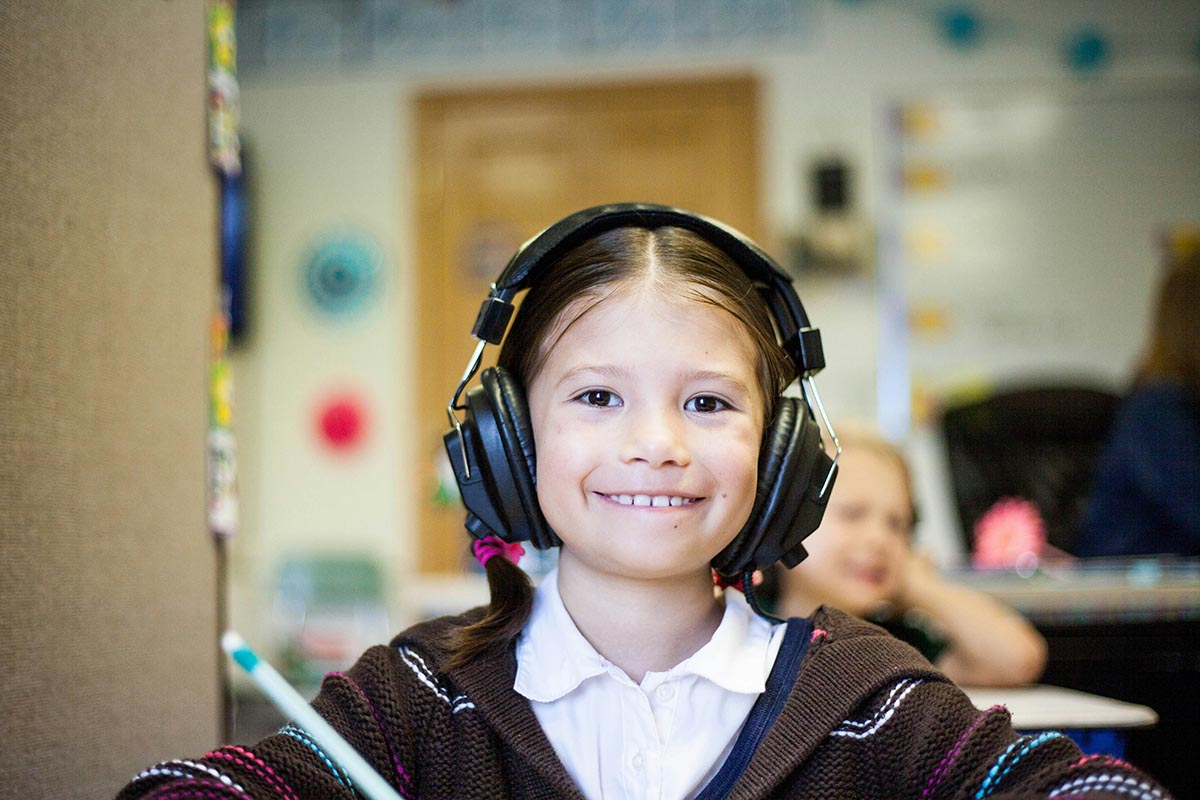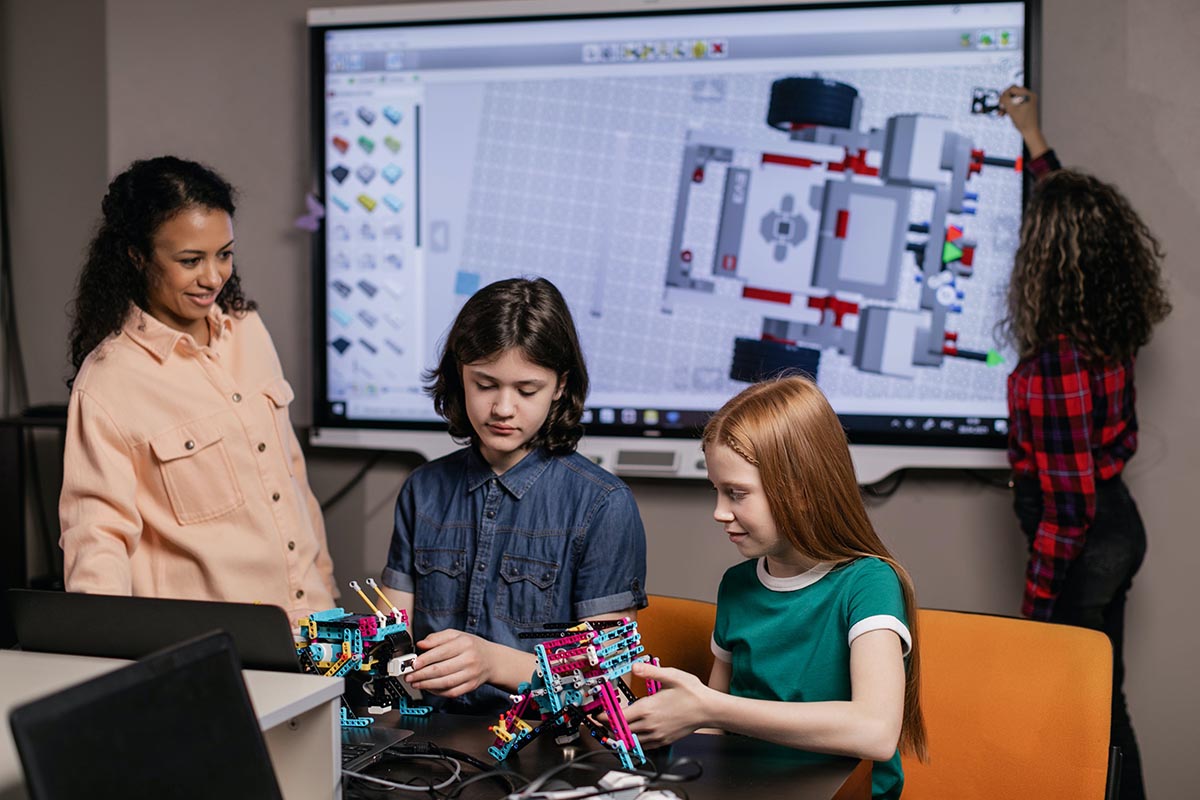What Elements Make For A Great School?
In the quest for educational excellence, the definition of a great school often becomes a beacon of aspiration for communities worldwide. A great school transcends the traditional boundaries of learning, embodying an ecosystem where students not only excel academically but also grow as well-rounded individuals.
Identifying the key elements contributing to such an institution’s success is crucial for educators, parents, and policymakers.
This article delves into the core components that distinguish a great school, including leadership quality, the caliber of teachers, the learning environment, curriculum depth, student-centric approaches, community involvement, diverse support services, and a robust framework for performance evaluation.
Fortunately, this post can help. We explore some elements that facilitate top-notch schools to impress parents and stand out in the community.
- Definition of a Great School
A great school is often perceived as an educational sanctuary transcending conventional teaching methodologies and learning environments. It is a place where the academic curriculum is just a part of a broader, more holistic approach to education. For example, the fictional ‘Harmony Academy’ is renowned for its exceptional academic achievements.
Still, what truly sets it apart is its vibrant community spirit, commitment to environmental sustainability, and a robust support system for mental health and well-being. This institution embodies the essence of a great school by nurturing the intellect and emotional and social development of its students.
- Importance of Identifying Key Elements
Understanding the key elements that contribute to the success of great schools is vital for several reasons. It provides a blueprint for other schools aspiring to elevate their standards and effectiveness. For instance, when ‘Maplewood School’ identified a lack of community engagement as a gap in its educational model, it looked towards ‘Harmony Academy’ as a model.
By adopting similar community integration strategies, such as partnering with local businesses for educational programs and creating community service opportunities for students, Maplewood saw a significant increase in student engagement and academic performance. This example illustrates how identifying and implementing key elements from successful schools can lead to tangible improvements.
- Preview of Main Elements Covered
The main elements that contribute to the making of a great school include visionary leadership, a team of dedicated and qualified teachers, a safe and nurturing environment, a comprehensive and engaging curriculum, a student-centered learning approach, active parent and community involvement, diverse support services and extracurricular activities, and a solid framework for performance measurement and accountability.
For instance, “Summit Preparatory School” exemplifies visionary leadership through its principal, Dr. Elena Torres, who has implemented an innovative educational philosophy focused on critical thinking and global citizenship. This approach has elevated student performance and attracted a diverse and highly skilled teaching staff committed to the school’s mission.
In another example, ‘Riverdale Elementary showcases the impact of a nurturing environment through its comprehensive anti-bullying program and mental health support services, creating a safe space where students feel valued and supported.
Moreover, ‘Tech Innovators Academy’ stands out for its robust curriculum, particularly its emphasis on STEM education and digital literacy, preparing students for the challenges of the 21st century.
These examples provide a glimpse into the multifaceted nature of great schools and the diverse elements that contribute to their success.
Innovation
In the rapidly evolving educational landscape, innovation emerges not merely as an option but as a necessity for schools aiming to prepare students for future complexities.
At the forefront of educational priorities, innovation entails a dynamic approach to teaching, learning, and school management underpinned by a willingness to embrace new technologies and methodologies.
 The Essence of Innovation in Schools
The Essence of Innovation in Schools
Innovation in education transcends the mere adoption of new technologies; it involves fundamentally rethinking how education is delivered, ensuring it is more personalized, engaging, and relevant to the real world. This could mean restructuring the traditional school day to accommodate varied learning styles and needs, enhancing each student’s educational experience.
 Examples of Innovative Practices
Examples of Innovative Practices
- Small Group Math Classes: Pioneering schools have begun to divide students into smaller groups for math instruction, allowing for more personalized attention and tailored teaching strategies. This approach has shown promising results in improving comprehension and engagement, as teachers can adapt their methods to the specific strengths and weaknesses of each group.
- High-Achiever Groups for Sports: Recognizing students’ diverse talents, some schools have established high-achiever groups in sports, providing an avenue for athletically gifted students to push their boundaries and excel. This not only fosters physical fitness and teamwork but also cultivates a sense of discipline and excellence that can translate to academic and personal achievements.
- Integration of Artificial Intelligence: The advent of AI in education has opened new horizons for interactive learning. Schools that incorporate AI tools in the classroom offer students a unique opportunity to engage with the material more effectively and personally. For instance, AI-powered tutoring systems can provide instant feedback and adapt to the learning pace of each student, making education more accessible and effective.
 The Impact of Innovation
The Impact of Innovation
The impact of these innovations is profound, offering students a more customized and engaging learning experience that prepares them for the challenges and opportunities of the future. By focusing on the individual needs and talents of each student, schools can unlock potential in ways that traditional educational models cannot.
 The Path Forward
The Path Forward
For schools to truly embrace innovation, there must be a commitment at all levels—from administrators to teachers, parents, and students—to be open to change and continuous improvement. Investing in professional development, infrastructure, and collaborative networks can catalyze the transformation needed to make education more adaptive, inclusive, and forward-thinking.
In conclusion, as schools navigate the complexities of the 21st century, innovation must be at the heart of their mission. By reimagining how education is delivered and embracing the tools and technologies available, schools can ensure that they are teaching students and inspiring them to be lifelong learners and innovators in their own right.
Engaging Curriculum
An engaging curriculum is another essential element of a school that has its priorities right. Focusing on relevant and broad academic topics combined with life skills builds young people who feel more confident moving out into the world.
The curriculum should prepare students for success in the future in all aspects of life. Critically, young people should know how to manage their finances, sell to people, and deal with life’s inevitable challenges. Things can get off-track if educational institutions pay insufficient attention to these aspects of growing up.
It also helps if schools adopt varying learning styles to suit more students. Most people learn best when they have active opportunities to practice the skills they develop in class.
Student Well-Being
Top schools also prioritize student well-being. Young people move through grades, always feeling that pastoral support is never far away should they run into trouble.
Student well-being can take various forms. All schools should nominate a trusted person students can talk to confidently about issues they face. Institutions should also offer support resources and a favorable environment for learning to take place.
Students who feel alone or isolated are more likely to encounter mental health issues as they progress, according to https://www.nursingtimes.net/students/loneliness-affects-each-student-differently.
Recreational Activities
Recreational activities are another priority of the best schools. These institutions understand that students learn best when they balance fun with study.
The first place to look is the school’s grounds. As sites like https://www.generalrecreationinc.com/school-playground-equipment-company/ point out, numerous opportunities exist to improve them with playground equipment where students can have fun during breaks.
Other options include things like football teams and trips to athletics tracks. These visits can encourage students to adopt sports and enjoy the process of growing up more.
Community Involvement
Many of the best schools also involve themselves in the community. Strong partnerships between schools and the wider public can help give students a more rounded experience that’s less cloistered and focused on academic disciplines.
This community involvement encourages students to engage in face-to-face interactions and take more responsibility for the people around them. It gets them into the habit of serving others instead of focusing on themselves or their specific worries.
What Elements Make for a Great School: Exceptional Teachers
In the intricate mosaic of factors that contribute to the success of a school, exceptional teachers stand out as the cornerstone. Recognizing this, premier educational institutions prioritize attracting and retaining top-tier talent, viewing investment in faculty not as an expense but as a critical investment in the future of their students and the institution itself.
 Investing in Talent
Investing in Talent
The philosophy that underscores the recruitment strategies of these institutions is simple yet profound: quality education requires quality educators. This understanding leads some of the most prestigious schools to offer competitive wage premiums well above industry standards to attract exceptional teachers. While the financial aspect is significant, it’s the recognition of the value that skilled and passionate educators bring to the educational experience that truly sets these institutions apart.
 The Impact of Exceptional Teachers
The Impact of Exceptional Teachers
The presence of exceptional teachers in a school has a transformative effect on all facets of school life. Firstly, the quality of education sees a marked improvement. Teachers who are not only knowledgeable in their subject areas but also skilled in pedagogical practices can tailor their teaching methods to meet the diverse learning needs of their students, thereby enhancing learning outcomes.
Enhanced Student Achievement
The benefits of having exceptional teachers extend to student performance as well. With access to educators who can inspire, challenge, and support them, students are more likely to excel academically, achieving higher exam results and a deeper understanding of the subjects. These educators serve not just as instructors but as mentors, guiding students through their academic journey and beyond.
Supportive Educational Environment
Moreover, exceptional teachers contribute to a nurturing and supportive educational environment. Their commitment to the well-being and success of their students fosters a sense of belonging and community within the school. This supportive atmosphere encourages students to take intellectual risks, engage in collaborative learning, and pursue personal growth alongside academic achievement.
Cultivating a Culture of Learning
Perhaps most importantly, exceptional teachers are instrumental in cultivating a vibrant culture of learning within the school. Their passion for education and continuous learning serves as a model for students, inspiring them to adopt a similar love for knowledge and inquiry.
This culture of learning extends beyond the classroom, influencing the school’s ethos and contributing to a dynamic, engaging educational experience for all members of the school community.
Investing in Talent
The philosophy that underscores the recruitment strategies of these institutions is simple yet profound: quality education requires quality educators. This understanding leads some of the most prestigious schools to offer competitive wage premiums, well above industry standards, to attract exceptional teachers.
While the financial aspect is significant, it’s the recognition of the value that skilled and passionate educators bring to the educational experience that truly sets these institutions apart.
The Impact of Exceptional Teachers
The presence of exceptional teachers in a school has a transformative effect on all facets of school life. Firstly, the quality of education sees a marked improvement. Teachers who are not only knowledgeable in their subject areas but also skilled in pedagogical practices can tailor their teaching methods to meet the diverse learning needs of their students, thereby enhancing learning outcomes.
Enhanced Student Achievement
The benefits of having exceptional teachers extend to student performance as well. With access to educators who can inspire, challenge, and support them, students are more likely to excel academically, achieving higher exam results and a deeper understanding of the subjects. These educators serve not just as instructors but as mentors, guiding students through their academic journey and beyond.
Supportive Educational Environment
Moreover, exceptional teachers contribute to a nurturing and supportive educational environment. Their commitment to the well-being and success of their students fosters a sense of belonging and community within the school. This supportive atmosphere encourages students to take intellectual risks, engage in collaborative learning, and pursue personal growth alongside academic achievement.
Cultivating a Culture of Learning
Perhaps most importantly, exceptional teachers are instrumental in cultivating a vibrant culture of learning within the school. Their passion for education and continuous learning serves as a model for students, inspiring them to adopt a similar love for knowledge and inquiry. This culture of learning extends beyond the classroom, influencing the school’s ethos and contributing to a dynamic, engaging educational experience for all members of the school community.
What Elements Make for a Great School: Strong Leadership
Finally, the best schools always have the most vital leadership. The senior management team is decisive about taking the institution in the right direction in a way that serves students.
Visionary headmasters go beyond motivating their teams to improve the school and branch out to the wider community. These individuals have a knack for understanding how to get parents interested in helping the school thrive. They also reach out to businesses and industries so that students have contact with people in the labor market. These contacts can improve life chances once students complete their final year.
Of course, the elements that matter in any school’s situation will vary considerably. Some won’t need to take on extra teachers while others will lack community involvement. It is up to the institution to decide on its priorities.






















